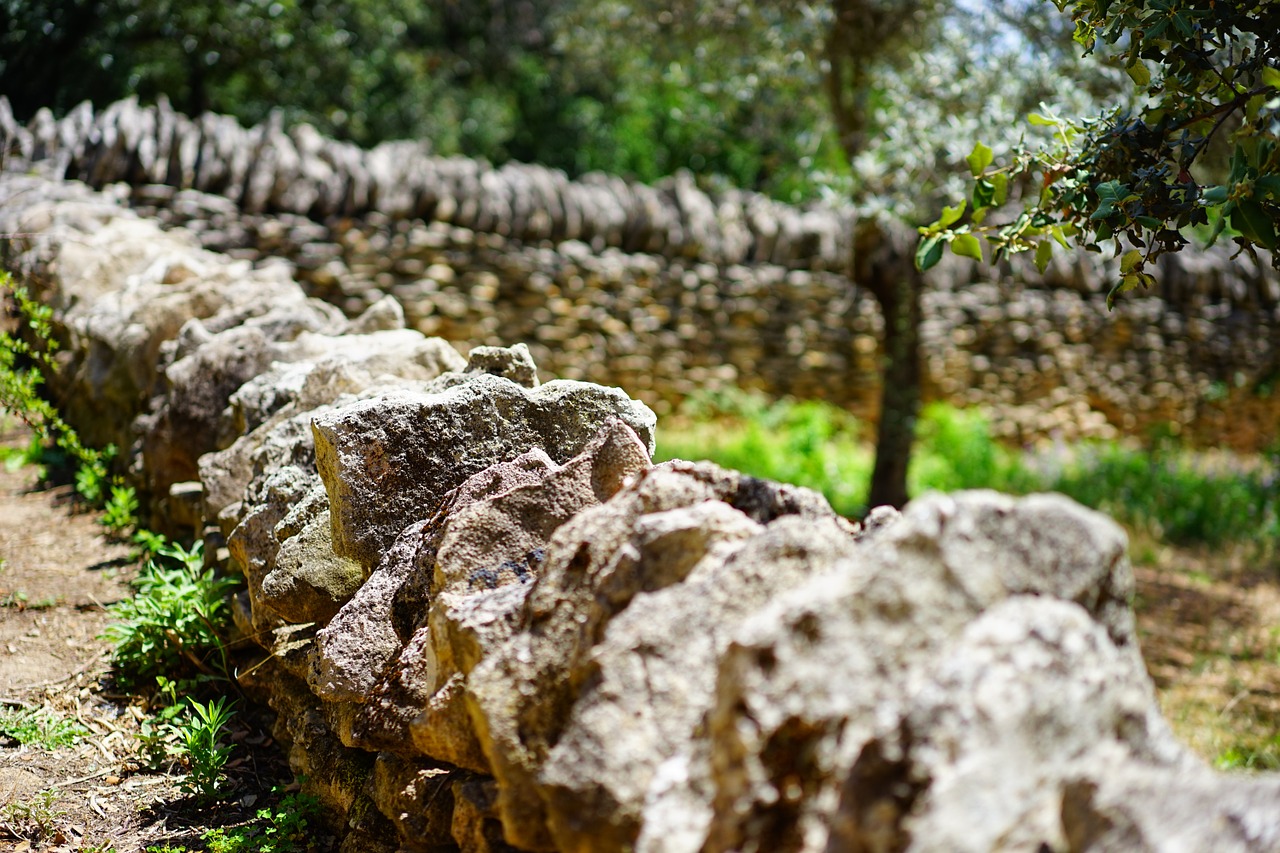THEItaly it is a land that hides many treasures. From churches, to paintings, from valleys to mountains, our peninsula is rich of a remarkable variety of priceless goods. But that is not all. To integrate the already vast national cultural heritage i arrive dry stone walls. Widespread in different areas of Italy is the Noon to host the greatest number. Recently proclaimed intangible heritage of humanity they collect all the skill of the know-how of a time. So let's try to get to know this more closely ancient production man.
The technique and its origins
How are dry stone walls born? The name itself says so. Stacking up stones one on top of the other without using mortar or other binding material. That said it may seem simple but in order for you to get one solid structure much more is needed. First of all, the stones must be modeled so that they fit together.

We will then proceed to create two rows, one internal and one external, filling the intermediate space with smaller stones. The use of land is strictly forbidden. The reason is easily understood. At the first rains it would be carried away by the water with consequent collapse of the wall. Plus the shape. It is important that the structure is wider at the base and narrower at the top just like a trapeze. But when was this art born? We need to take a big step back in time. He is the man of the Neolithic the first to practice these constructions. It must be said that that was a revolutionary period: agriculture, livestock, permanent villages, weaving. And it is precisely by preparing the land for cultivation that man finds and piles up a large quantity of stones. To do what? Surely fences to delimit fields and villages but also burials.
Numerous uses
In Italy the seeds of dry stone walls is present from north to south. From Trentino through Tuscany to Puglia to reach the islands of Sardinia and Sicily. But it is certainly the South that deserves the title of Kingdom of dry stone walls. Let's imagine taking a tour between these regions.

We would certainly be amazed by a technique that finds space in different uses. In the beautiful Amalfi Coast the dry stone walls outline the borders of the lemon groves. In Puglia they are present in trulli, in the historical historic farms and on the perimeter of the olive groves. Calabria and Sicily see them in support of terracing especially for the cultivation of follow. In Sardinia we can even see them in a more than ancient building: i nuraghi.
The importance and the value
While it is true that dry stone walls can be used for several purposes, so are the meanings that these have ontechnology. Undoubtedly they present themselves to our eyes in a harmonious intertwining with the and gentle cosmetics. They run between the hills and the mountains, describing an almost symbiotic relationship with the landscape that is so pleasing to the eye. We can therefore state that there is an aesthetic value: the taste for beauty.
But they also have a meaning that animals and plants benefit from. How? Right there technique with which they are built attracts numerous animals who find a hospitable refuge here. The humidity in the air condenses between the stones, becoming a favorite destination for geckos, lizards, amphibians and many others. A perfect microclimate both in summer and in winter which favors biodiversity e agriculture.

In ancient times, women collected mint, mauve and even the "candle plant" from the dry stone walls used to make candle wicks. This art also gives us an additional advantage a protection of man and conservation of the environment. It fights erosion but also the desertification of the lands, prevents landslides and avalanches. A true triumph of quality.
Unesco recognition in Italy and in the world
Last November the dry stone walls found the Unesco recognition in all those countries that have submitted the candidacy. Not only Italy but also Cyprus, Greece, Croatia, Switzerland, France and Spain. The spread of this technique in the Mediterranean area would perhaps be due to the human movements. Practice heavily used in Roman times soon spreads in many places of the vast Empire. So it is for the "murus gallicus" that i Celts they built to protect the villages. And here is the tradition to continue over time, handed down by one generation the other even crosses the Atlantic. It is in Latin america that there are in fact the great step pyramids. Not a place therefore but the appreciation of an ancient art, expression of the first human artifacts. The dry stone wall is history, tradition, art and culture.





